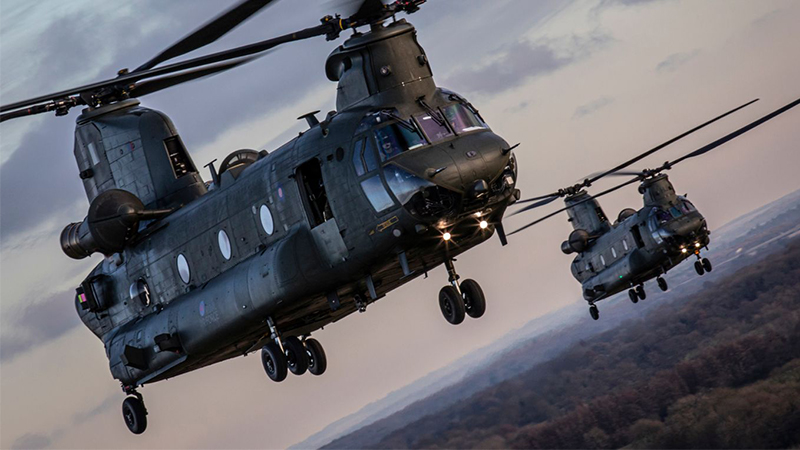

The RAF’s heavy-lifting fleet – the CH-47 Chinook helicopter and C-17 Globemaster plane – are set to receive vital upgrades to their hardware and software. The UK government announced a £400 million investment in September 2021 as part of its Integrated Force 2030 plans.
What will this investment fund, and why is it more important than ever to keep these aircraft up to date?
The £400 million investment is split largely in favour of the C-17. The UK’s fleet will receive £324 million to upgrade its hardware and software to improve flight and detection efficiency. This is to be part of the Virtual Fleet concept, which includes C-17 operating nations.
Over the next five-and-a-half years, the C-17s will have their Beyond Line of Sight communications array upgraded to improve communication distance and safety. Along with this, the plan will improve the pilots’ field of view using a heads-up display. It will provide pilots with greater awareness in the field while also improving parachuting capabilities.
The RAF’s Mk5 and Mk6 Chinook helicopters will only receive £64 million, but the upgrades are no less important. As part of a contract with Boeing Defence UK, the helicopters will receive new Infra-Red Suppression Systems. In practical terms, this means installing blanking plates to cover the hottest parts of the helicopters and directing airflow to cool exhaust fumes.
This system will support current missile detection warnings but will specifically guard against infrared missiles. The technology’s prevalence is on the rise and is arguably one of the most difficult to counteract because, as we know, every motorised vehicle gives off heat.
Between the two upgrade contracts, the MOD estimates there will be approximately 200 new jobs. Roughly 100 of these are with Boeing Defence UK to handle the Chinook contract, and the remaining will work on upgrading and maintaining the C-17 fleet at RAF Brize Norton.
The most primary reason for the upgrade contract should be obvious in the Chinook’s enhancements. Offensive technology is constantly growing in complexity, and so defensive measures must keep up. Considering neither the C-17 nor Chinook are offensive aircraft, they must handle potential battlefield threats efficiently.
Along with this, it is fair to assume that much of the software is outdated. Although military vehicles are often far ahead, the UK’s armed forces are currently undergoing a massive overhaul in their technological capabilities. The eventual goal is clarified in the government’s 2030 plans.
It is easy to overlook logistics vehicles in favour of offensive and defensive ones. But, as became obvious during the 2021 Afghanistan evacuation, these aircraft do plenty to earn their keep. As a result, it is vital to keep them up-to-date with the latest advances in communications and navigation hardware.
The main goal of the project is to keep C-17s and Chinooks operating effectively in the future. Upgrading important components – and their associated software – is more cost-efficient than investing in a new fleet. And, considering the flexibility of both aircraft, it is fair to assume that it will be a long time before the RAF casts them aside in favour of completely new models.